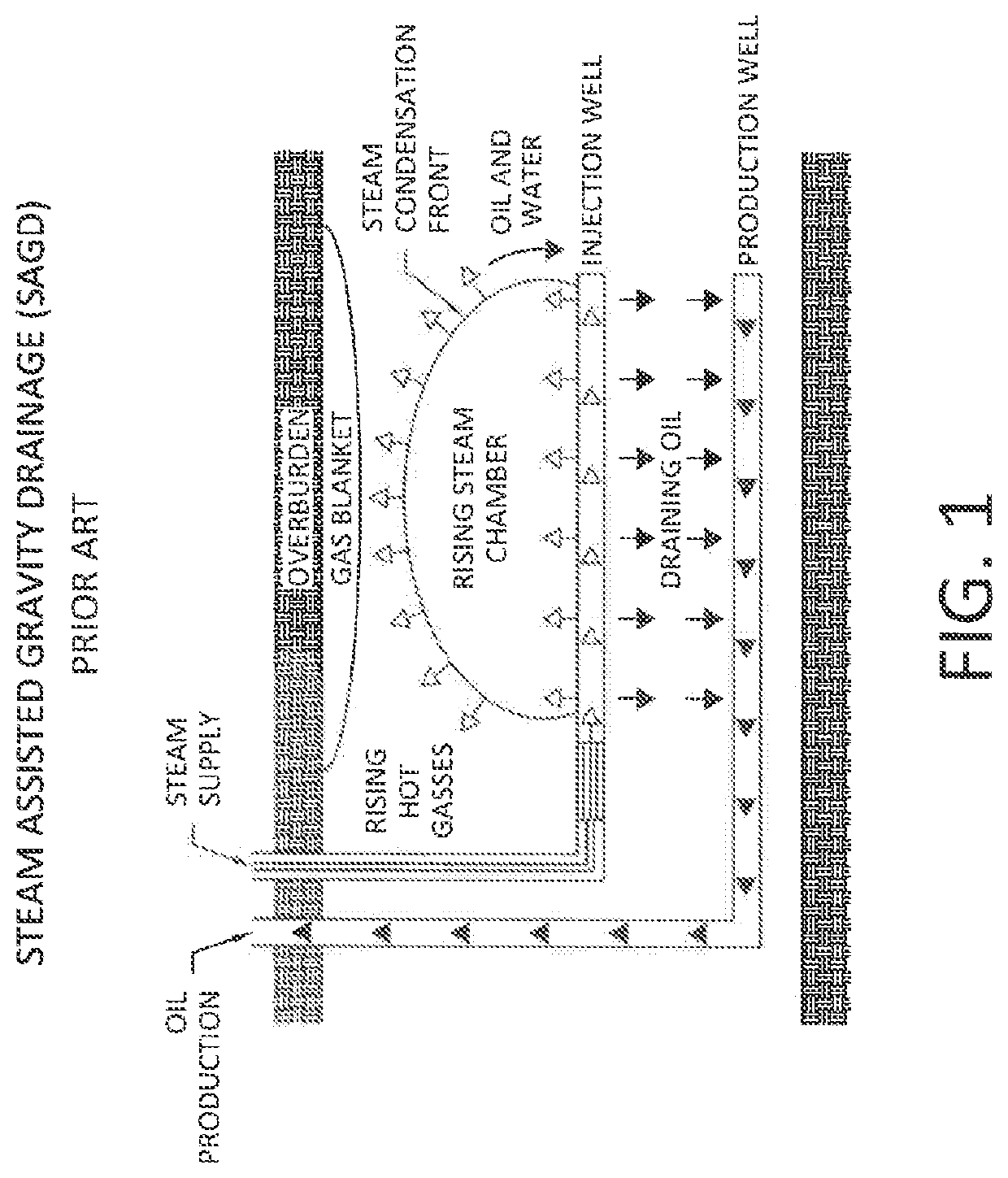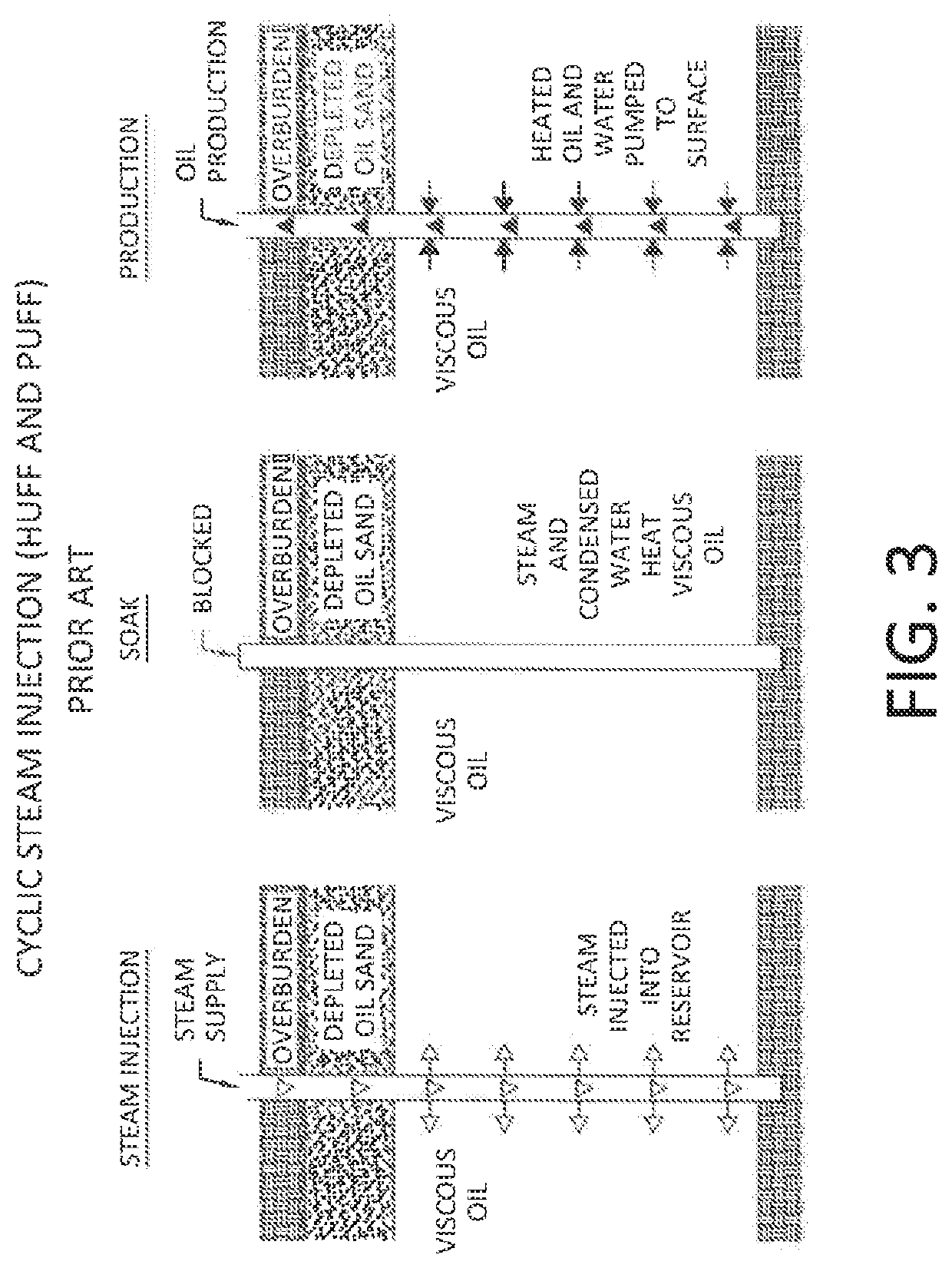Method and Apparatus for Thermal Fluid Generation for Use in Enhanced Oil Recovery
a technology of thermal fluid and oil recovery, applied in the direction of fluid removal, earthwork drilling and mining, borehole/well accessories, etc., can solve the problems of inefficient conventional fluid heating operations and high heat requirement of conventional thermal fluid generators, and achieve the effects of increasing the heating capacity, and reducing the cost of the proj
- Summary
- Abstract
- Description
- Claims
- Application Information
AI Technical Summary
Benefits of technology
Problems solved by technology
Method used
Image
Examples
first embodiment
[0054]FIG. 7 depicts a side sectional view of a first embodiment plasma steam generator assembly 100 and shroud assembly 150 components of a thermal fluid generator assembly 10 of the present invention. In this embodiment, a portion of the cooling water that is being discharged from plasma torch 110 is directed into shroud 150 to serve as the water source for water that is injected through nozzles 160 and directed into plasma jet stream / corona 130 of plasma torch 110. An important benefit of this embodiment which utilizes a portion of the cooling water from plasma torch 110 as inlet water flow to shroud 150 is that the temperature of the water discharged from cooling loop 140 and flowing through nozzles 160 is significantly elevated. As such, the amount of energy required convert said water stream into steam is reduced which, in turn, allows for operation of plasma torch 110 at a lower energy level, thereby lowering the cost of operation and increasing system cost efficiency.
second embodiment
[0055]FIG. 8 depicts a side sectional view of a plasma steam generator assembly 100 and shroud assembly 150 components of a thermal fluid generator assembly of the present invention. In the embodiment depicted in FIG. 8, substantially all of the cooling water that is circulated through cooling loop 140 is returned to a heat exchanger in order to bring the temperature of the water desired temperature level required for recirculation into torch 110. In the configuration, none of the cooling water discharged from cooling loop 140 is directed immediately back the shroud for generating steam. In this arrangement all of the water feedstock for injecting into the shroud is provided directly from the water de-ionizing system.
[0056]FIG. 9 depicts a side schematic view of one embodiment of a subsurface injection EOR operation wherein steam is generated at the earth's surface using a thermal fluid generator assembly of the present invention. A heated steam and nitrogen mixture is directed to a...
PUM
 Login to View More
Login to View More Abstract
Description
Claims
Application Information
 Login to View More
Login to View More - R&D
- Intellectual Property
- Life Sciences
- Materials
- Tech Scout
- Unparalleled Data Quality
- Higher Quality Content
- 60% Fewer Hallucinations
Browse by: Latest US Patents, China's latest patents, Technical Efficacy Thesaurus, Application Domain, Technology Topic, Popular Technical Reports.
© 2025 PatSnap. All rights reserved.Legal|Privacy policy|Modern Slavery Act Transparency Statement|Sitemap|About US| Contact US: help@patsnap.com



